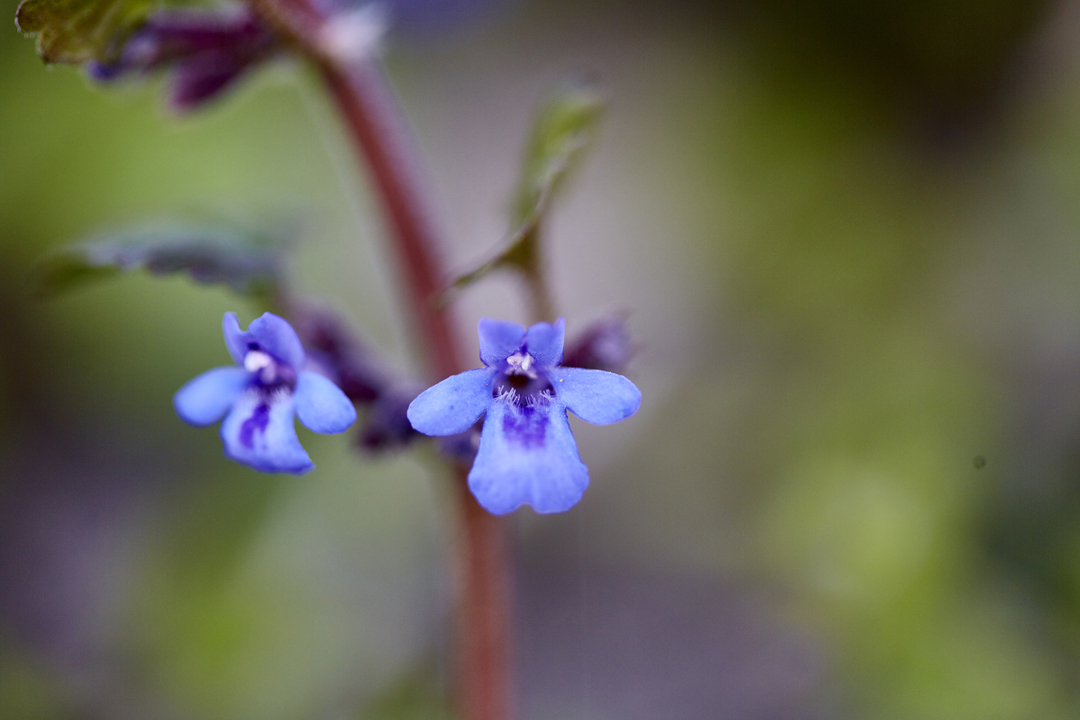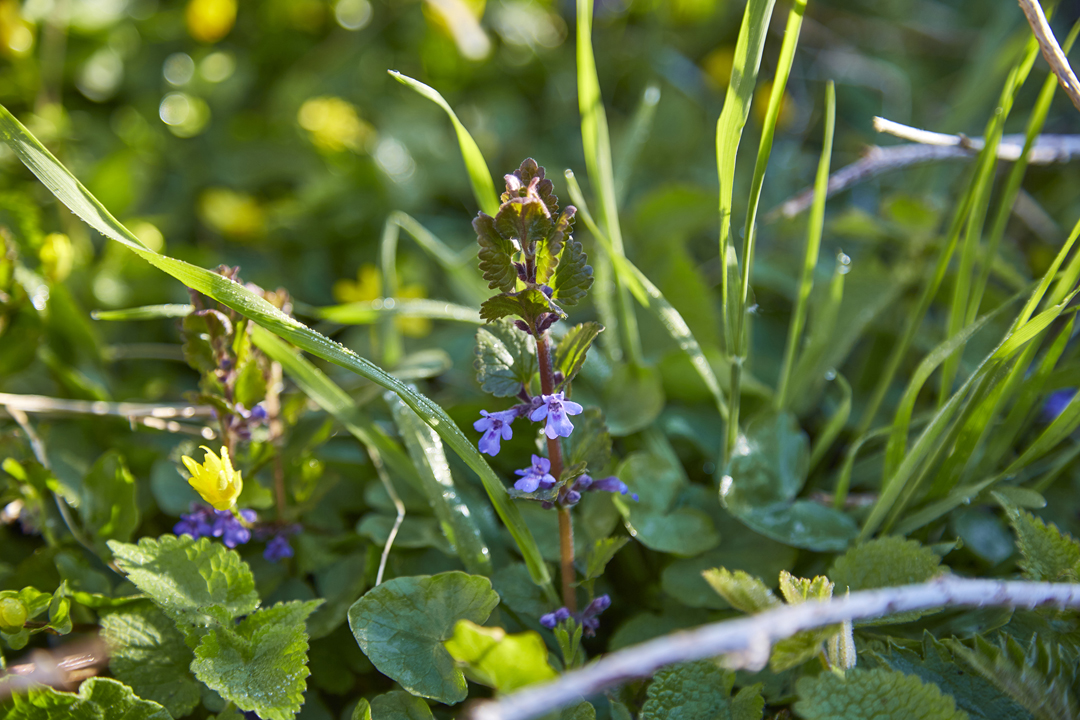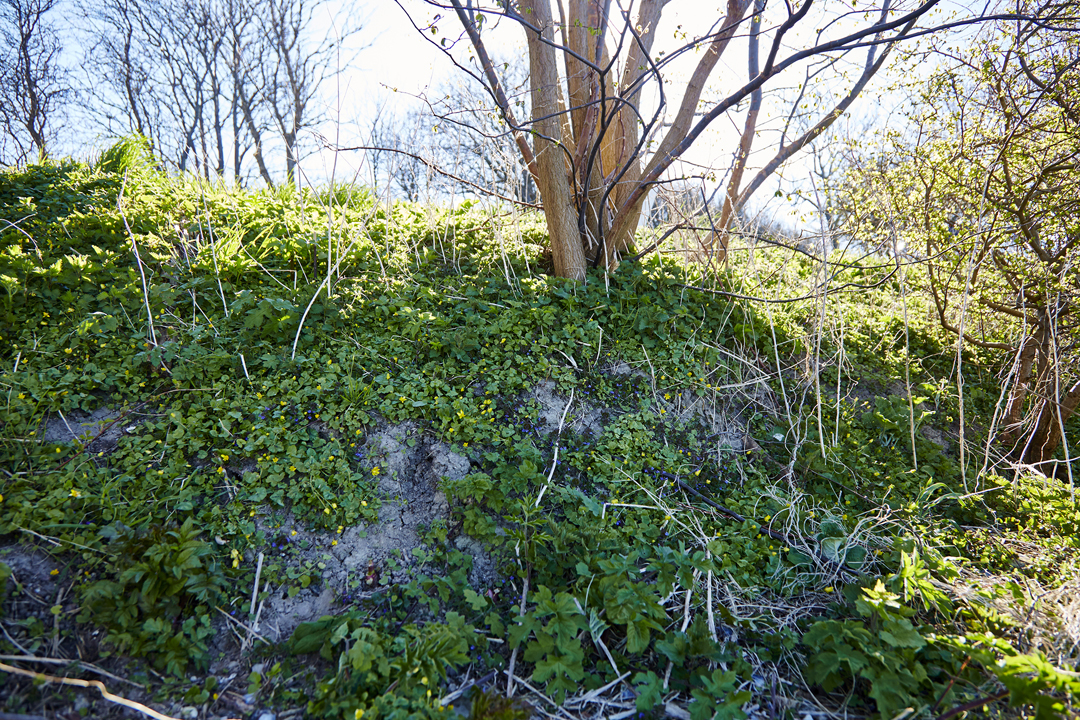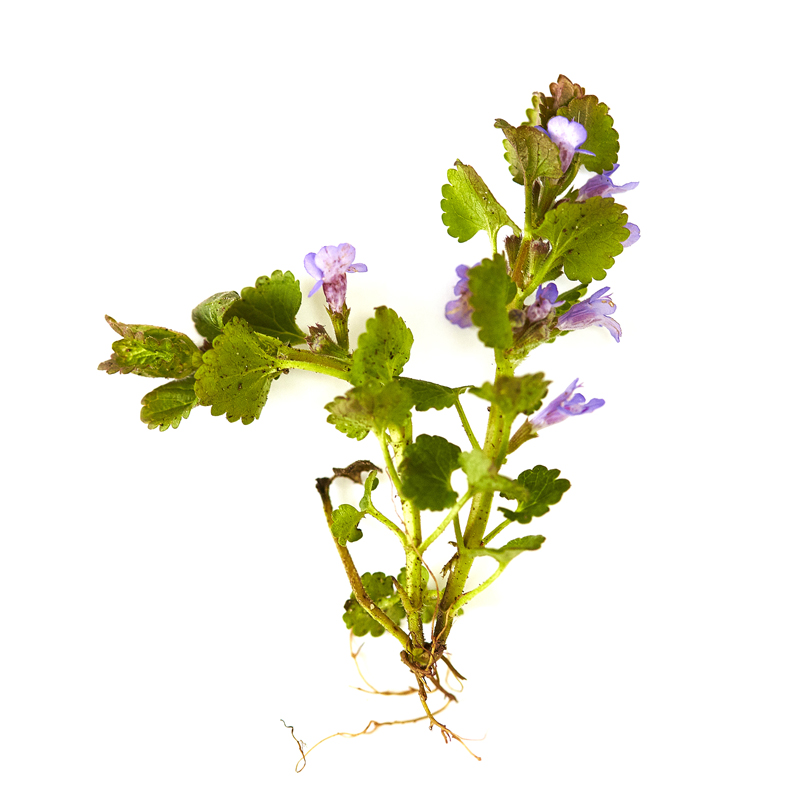



Ground ivy
Ground ivy belongs to the mint family and combines the freshness of that plant with the earthier, somewhat peppery flavor of sage and rosemary. Ground ivy is sometimes called "creeping Charlie," which makes sense if you've ever seen how it can invade an area.
-
Where to Find It
Ground ivy normally lives in shadowy, moist places—preferably under leaf cover, where it creeps over the ground, extending its hairy stems into the air. It can tolerate sunny areas, but it will not spread as widely as it does in the shade. Common in gardens and parks, it spreads quickly, covering vast tracts of land with its dense foliage. Like fungi, ground ivy has a root system that penetrates deep and wide, so it will easily survive most attempts at stamping it out.
Deciduous forests, coniferous forests, towns, hedges, roadsides, grasslands.
-
When to Find It
You can pick ground ivy all summer long.
Entire plant: May, June, July, August.
-
How to Spot It
Ground ivy can reach half a meter in length and tends to grow in large colonies. Its leaves are two to three cm in diameter, kidney-shaped or round, and have gently rounded teeth. They attached individually to stems that grow between three and six cm long, in pairs across from one another along the rectangular, hairy stalk. In spring, ground ivy develops small tubular flowers that are purple or blow and grow in groups of two or three along the upper part of the stalk.
Risk of misidentifying the plant
There is no risk of mistaking the plant for another dangerous or undesirable plant.



